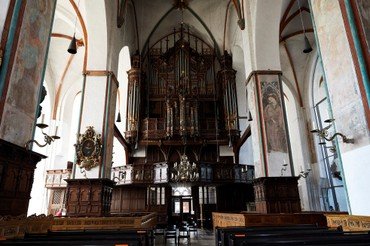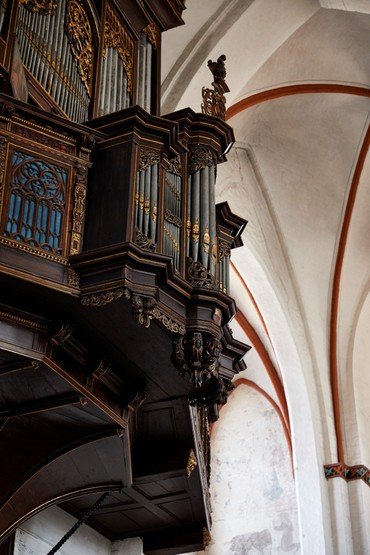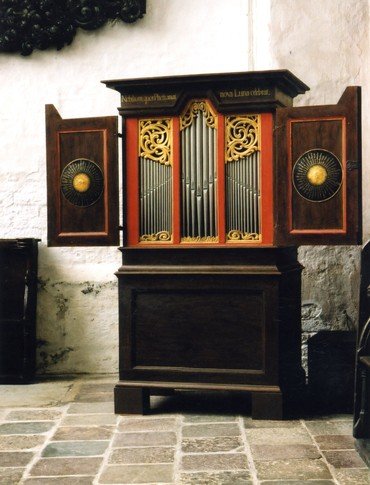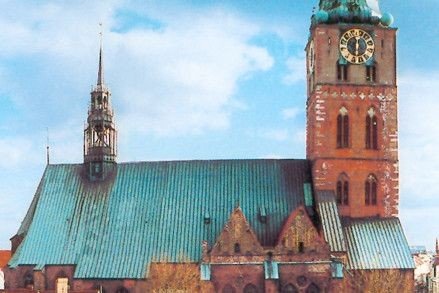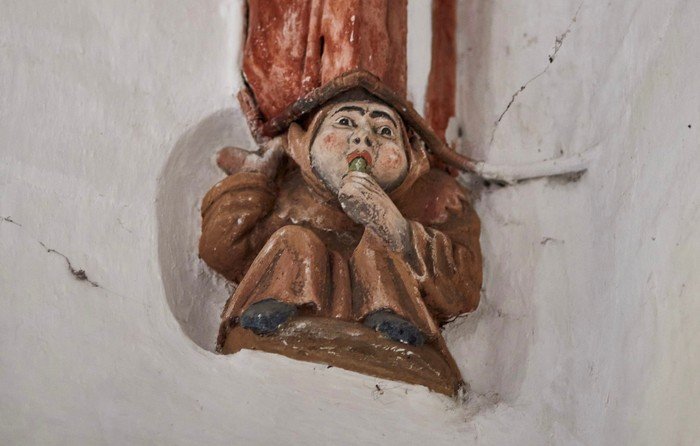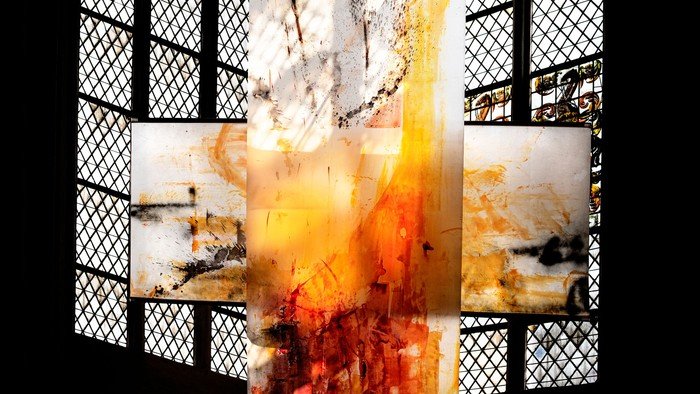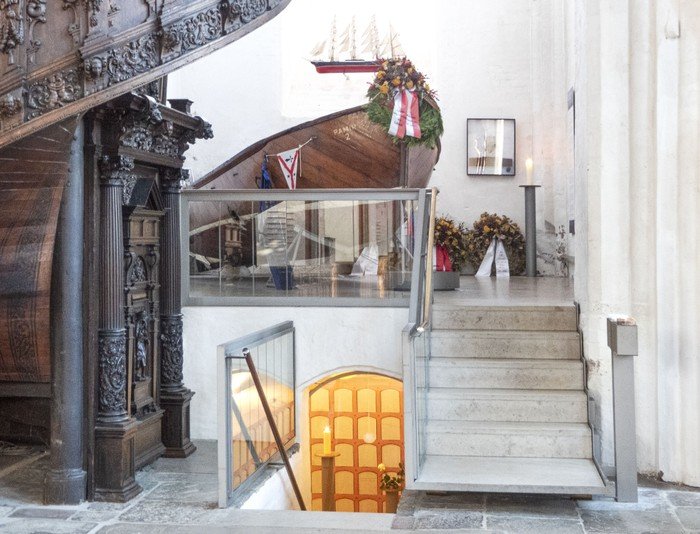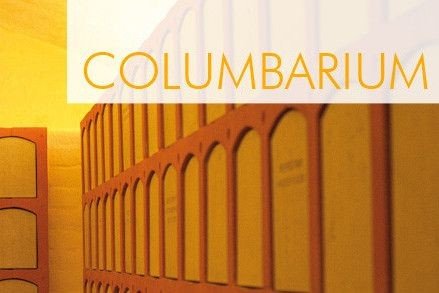The Organs
The St. Jakobi Church contains the last two historical organs in Lübeck, behind whose facades original pipeworks still stand. Their unification of stylistic elements of the Gothic, Renaissance and Baroque period make them particularly interesting instruments. Their oldest components, the present Hauptwerk divisions, have Gothic cases and are among the few surviving anywhere in the world.
My name is Arvid Gast. I am Professor of Organ at the Musikhochschule Lübeck and Titularorganist of the Jakobikirche.
Me an my assisting organist Gregor Früh are in the favorable position of playing these great organs regularly and caring for their support.
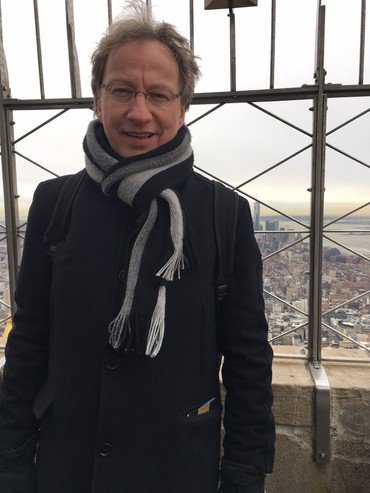
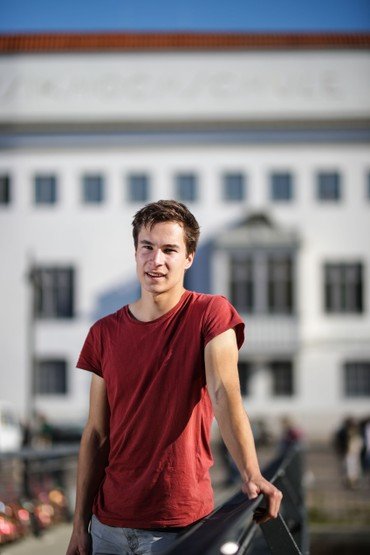
Große Orgel (Westorgel)
As early as 1466, an organ stood on the west wall, according to inscription on the foundation beam. The present Hauptwerk was a Gothic Blockwerk in 1504, was rebuilt by Hans Köster in 1573, and enlarged with the addition of a Rückpositiv.
The St. Jakobi Church contains the last two historical organs in Lübeck, behind whose facades original pipeworks still stand. Their unification of stylistic elements of the Gothic, Renaissance and Baroque period make them particularly interesting instruments. Their oldest components, the present Hauptwerk divisions, have Gothic cases and are among the few surviving anywhere in the world.
My name is Arvid Gast. I am Professor of Organ at the Musikhochschule Lübeck and Titularorganist of the Jakobikirche.
Me an my assisting organist Gregor Früh are in the favorable position of playing these great organs regularly and caring for their support.


Große Orgel (Westorgel)
As early as 1466, an organ stood on the west wall, according to inscription on the foundation beam. The present Hauptwerk was a Gothic Blockwerk in 1504, was rebuilt by Hans Köster in 1573, and enlarged with the addition of a Rückpositiv.
In 1673, Joachim Richborn expanded the Rückpositiv and added the two pedal towers and a Brustwerk. The Brustwerk was enlarged in 1740 with the addition of three 8’ stops and was relocated as an Oberwerk behind the Hauptwerk. With the thorough restoration in 1983/84 by Karl Schuke (West Berlin), the splendid case was stabilized and enlarged. The historic pipe material – contained in the 22 stops indentified on the specification with an asterisk* – governed the scalings for all the new pipework. Accordingly, these new pipes contain a high percentage of lead; only the Oberwerk pipes have high tin content.The organ is tuned at equal temperament (a’=442 Hz at 18 degrees Centigrade) and has 62 stops distributed over four manuals and pedal. Detailed information concerning the Große Orgel disposition is documented here.
As an acoustic example of the Große Orgel: Excerpt of Johann Sebastian Bach - Fantasia in G, given by Arvid Gast.
Die Stellwagen-Orgel (Nordorgel)
The Stellwagen organ is a precious historical instrument. Friedrich Stellwagen built a Rückpositiv, Brustwerk and a small pedal division in 1636/37, thus adding to the Gothic Hauptwerk (1467/1515). The wind-chests and nearly all pipes in the manual divisions are original.
Since the most recent refurbishing (Hillebrand 1977/78), the organ contains 31 stops over three manuals and pedal and is again in the old choir pitch, a whole tone higher than today’s standard pitch. The tuning system employed is Werckmeister “First correct temperament”.
All pipes are metal, and expansions or additions have followed exactly the historical alloy composition and scaling.
Manual compass : with short octave: C, D, E, F, G, A to c’’’
Pedal compass : chromatic from C to d’.Orgel
Detailed information about the Stellwagen-Orgel disposition is documented here.
As an acoustic example of the Stellwagen Orgel: Excerpt of Dieterich Buxtehude - Präludium, Fuge und Ciacona C-Dur, given by Arvid Gast.
Das Richborn-Positiv
Since 2003, the Richborn-Positiv is back in the St. Jakobi Church. The organ from 1673 was formerly situated on the screen. The case is original; the wind chests and pipes were re-constructed by Mads Kjersgaard (Uppsala/Schweden).
Detailed information about the Richborn-Positiv disposition is documented here.
As an acoustic example of the Richborn-Positiv: Richard Eggar - Esce Mars given by Arvid Gast.
All documents on this page are licensed under CC (BY-NC-SA) with exception of organ-fotos: (c) Ina Mortsiefer
The St. Jakobi Church contains the last two historical organs in Lübeck, behind whose facades original pipeworks still stand. Their unification of stylistic elements of the Gothic, Renaissance and Baroque period make them particularly interesting instruments. Their oldest components, the present Hauptwerk divisions, have Gothic cases and are among the few surviving anywhere in the world.
My name is Arvid Gast. I am Professor of Organ at the Musikhochschule Lübeck and Titularorganist of the Jakobikirche.
Me an my assisting organist Gregor Früh are in the favorable position of playing these great organs regularly and caring for their support.


Große Orgel (Westorgel)
As early as 1466, an organ stood on the west wall, according to inscription on the foundation beam. The present Hauptwerk was a Gothic Blockwerk in 1504, was rebuilt by Hans Köster in 1573, and enlarged with the addition of a Rückpositiv.
In 1673, Joachim Richborn expanded the Rückpositiv and added the two pedal towers and a Brustwerk. The Brustwerk was enlarged in 1740 with the addition of three 8’ stops and was relocated as an Oberwerk behind the Hauptwerk. With the thorough restoration in 1983/84 by Karl Schuke (West Berlin), the splendid case was stabilized and enlarged. The historic pipe material – contained in the 22 stops indentified on the specification with an asterisk* – governed the scalings for all the new pipework. Accordingly, these new pipes contain a high percentage of lead; only the Oberwerk pipes have high tin content.The organ is tuned at equal temperament (a’=442 Hz at 18 degrees Centigrade) and has 62 stops distributed over four manuals and pedal. Detailed information concerning the Große Orgel disposition is documented here.
As an acoustic example of the Große Orgel: Excerpt of Johann Sebastian Bach - Fantasia in G, given by Arvid Gast.
Die Stellwagen-Orgel (Nordorgel)
The Stellwagen organ is a precious historical instrument. Friedrich Stellwagen built a Rückpositiv, Brustwerk and a small pedal division in 1636/37, thus adding to the Gothic Hauptwerk (1467/1515). The wind-chests and nearly all pipes in the manual divisions are original.
Since the most recent refurbishing (Hillebrand 1977/78), the organ contains 31 stops over three manuals and pedal and is again in the old choir pitch, a whole tone higher than today’s standard pitch. The tuning system employed is Werckmeister “First correct temperament”.
All pipes are metal, and expansions or additions have followed exactly the historical alloy composition and scaling.
Manual compass : with short octave: C, D, E, F, G, A to c’’’
Pedal compass : chromatic from C to d’.Orgel
Detailed information about the Stellwagen-Orgel disposition is documented here.
As an acoustic example of the Stellwagen Orgel: Excerpt of Dieterich Buxtehude - Präludium, Fuge und Ciacona C-Dur, given by Arvid Gast.
Das Richborn-Positiv
The St. Jakobi Church contains the last two historical organs in Lübeck, behind whose facades original pipeworks still stand. Their unification of stylistic elements of the Gothic, Renaissance and Baroque period make them particularly interesting instruments. Their oldest components, the present Hauptwerk divisions, have Gothic cases and are among the few surviving anywhere in the world.
My name is Arvid Gast. I am Professor of Organ at the Musikhochschule Lübeck and Titularorganist of the Jakobikirche.
Me an my assisting organist Gregor Früh are in the favorable position of playing these great organs regularly and caring for their support.


Große Orgel (Westorgel)
As early as 1466, an organ stood on the west wall, according to inscription on the foundation beam. The present Hauptwerk was a Gothic Blockwerk in 1504, was rebuilt by Hans Köster in 1573, and enlarged with the addition of a Rückpositiv.
In 1673, Joachim Richborn expanded the Rückpositiv and added the two pedal towers and a Brustwerk. The Brustwerk was enlarged in 1740 with the addition of three 8’ stops and was relocated as an Oberwerk behind the Hauptwerk. With the thorough restoration in 1983/84 by Karl Schuke (West Berlin), the splendid case was stabilized and enlarged. The historic pipe material – contained in the 22 stops indentified on the specification with an asterisk* – governed the scalings for all the new pipework. Accordingly, these new pipes contain a high percentage of lead; only the Oberwerk pipes have high tin content.The organ is tuned at equal temperament (a’=442 Hz at 18 degrees Centigrade) and has 62 stops distributed over four manuals and pedal. Detailed information concerning the Große Orgel disposition is documented here.
As an acoustic example of the Große Orgel: Excerpt of Johann Sebastian Bach - Fantasia in G, given by Arvid Gast.
Die Stellwagen-Orgel (Nordorgel)
The Stellwagen organ is a precious historical instrument. Friedrich Stellwagen built a Rückpositiv, Brustwerk and a small pedal division in 1636/37, thus adding to the Gothic Hauptwerk (1467/1515). The wind-chests and nearly all pipes in the manual divisions are original.
The St. Jakobi Church contains the last two historical organs in Lübeck, behind whose facades original pipeworks still stand. Their unification of stylistic elements of the Gothic, Renaissance and Baroque period make them particularly interesting instruments. Their oldest components, the present Hauptwerk divisions, have Gothic cases and are among the few surviving anywhere in the world.
My name is Arvid Gast. I am Professor of Organ at the Musikhochschule Lübeck and Titularorganist of the Jakobikirche.
Me an my assisting organist Gregor Früh are in the favorable position of playing these great organs regularly and caring for their support.


Große Orgel (Westorgel)
As early as 1466, an organ stood on the west wall, according to inscription on the foundation beam. The present Hauptwerk was a Gothic Blockwerk in 1504, was rebuilt by Hans Köster in 1573, and enlarged with the addition of a Rückpositiv.
In 1673, Joachim Richborn expanded the Rückpositiv and added the two pedal towers and a Brustwerk. The Brustwerk was enlarged in 1740 with the addition of three 8’ stops and was relocated as an Oberwerk behind the Hauptwerk. With the thorough restoration in 1983/84 by Karl Schuke (West Berlin), the splendid case was stabilized and enlarged. The historic pipe material – contained in the 22 stops indentified on the specification with an asterisk* – governed the scalings for all the new pipework. Accordingly, these new pipes contain a high percentage of lead; only the Oberwerk pipes have high tin content.The organ is tuned at equal temperament (a’=442 Hz at 18 degrees Centigrade) and has 62 stops distributed over four manuals and pedal. Detailed information concerning the Große Orgel disposition is documented here.
As an acoustic example of the Große Orgel: Excerpt of Johann Sebastian Bach - Fantasia in G, given by Arvid Gast.
Die Stellwagen-Orgel (Nordorgel)
The Stellwagen organ is a precious historical instrument. Friedrich Stellwagen built a Rückpositiv, Brustwerk and a small pedal division in 1636/37, thus adding to the Gothic Hauptwerk (1467/1515). The wind-chests and nearly all pipes in the manual divisions are original.
Since the most recent refurbishing (Hillebrand 1977/78), the organ contains 31 stops over three manuals and pedal and is again in the old choir pitch, a whole tone higher than today’s standard pitch. The tuning system employed is Werckmeister “First correct temperament”.
All pipes are metal, and expansions or additions have followed exactly the historical alloy composition and scaling.
Manual compass : with short octave: C, D, E, F, G, A to c’’’
Pedal compass : chromatic from C to d’.Orgel
Detailed information about the Stellwagen-Orgel disposition is documented here.
As an acoustic example of the Stellwagen Orgel: Excerpt of Dieterich Buxtehude - Präludium, Fuge und Ciacona C-Dur, given by Arvid Gast.
Das Richborn-Positiv
Since 2003, the Richborn-Positiv is back in the St. Jakobi Church. The organ from 1673 was formerly situated on the screen. The case is original; the wind chests and pipes were re-constructed by Mads Kjersgaard (Uppsala/Schweden).
Detailed information about the Richborn-Positiv disposition is documented here.
As an acoustic example of the Richborn-Positiv: Richard Eggar - Esce Mars given by Arvid Gast.
All documents on this page are licensed under CC (BY-NC-SA) with exception of organ-fotos: (c) Ina Mortsiefer

